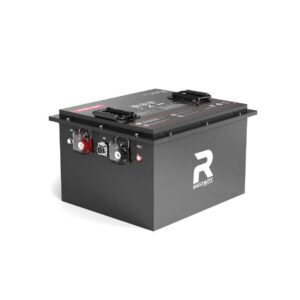How to Store RV Batteries During Long-Term Inactivity?
Proper storage of RV batteries during long periods of inactivity is crucial to maintain their performance and longevity. Whether you’re storing your RV for the winter or between trips, following best practices ensures your batteries remain in optimal condition. Below are key considerations and steps to effectively store your RV batteries.
What are the latest trends shaping the RV battery market?
How Do You Prepare RV Batteries for Long-Term Storage?
To prepare RV batteries for long-term storage, start by fully charging lead-acid batteries and lithium-ion batteries to 50-60% capacity. Disconnect terminals to prevent parasitic drain, clean corrosion with a baking soda solution (for lead-acid), and store in a cool, dry place. Use a smart maintainer for lead-acid types and check voltage monthly.

What Is the Ideal State of Charge for Stored RV Batteries?
Lead-acid batteries should be stored at 100% charge to prevent sulfation, while lithium-ion batteries perform best at 50-60% charge to minimize stress on cells. AGM batteries require a full charge. Recharge lead-acid every 3 months and lithium every 6 months to maintain optimal levels.
How Does Temperature Affect RV Battery Storage?
Store RV batteries at 40-60°F (4-15°C). Extreme cold reduces lead-acid efficiency and can freeze discharged batteries, while heat accelerates lithium-ion degradation. Avoid concrete floors—place batteries on wooden pallets to insulate them. Never store in direct sunlight or unventilated spaces.
Temperature fluctuations significantly impact battery chemistry. Lead-acid batteries exposed to subfreezing temperatures risk electrolyte freezing, which can crack battery cases. Lithium batteries, though more tolerant of cold, experience reduced ionic mobility below -4°F (-20°C), temporarily lowering capacity. Conversely, storage above 90°F (32°C) accelerates sulfation in lead-acid models and promotes electrolyte decomposition in lithium cells. A climate-controlled environment is ideal—consider using insulated battery boxes or garage storage with temperature monitoring.
| Battery Type | Safe Storage Range | Critical Risk Threshold |
|---|---|---|
| Flooded Lead-Acid | 35-60°F | Below 20°F (discharged) |
| AGM | 40-80°F | Above 90°F |
| Lithium-Ion | -4-113°F | Above 140°F |
Should You Disconnect RV Batteries During Storage?
Yes. Disconnecting terminals prevents energy loss from RV systems like clocks or alarms. Use insulated wrenches to avoid short circuits. For lithium batteries, disconnect the negative terminal first. Label cables for easier reinstallation.
Know more:
What Are the Best Batteries for RVs and How to Maintain Them?
How Often Should RV Battery Water Levels Be Checked?
What Are the Proper Charging Methods for RV Batteries?
How Long Do RV Batteries Typically Last?
What Safety Precautions Are Essential for RV Batteries?
How to Store RV Batteries During Long-Term Inactivity?
How Often Should You Check Stored RV Batteries?
Inspect lead-acid batteries monthly for charge levels and corrosion. Lithium batteries require checks every 2-3 months. Look for swelling, leaks, or voltage drops below 12.4V (lead-acid) or 12.8V (lithium). Recharge immediately if thresholds are breached.
Can You Leave RV Batteries Connected to Solar Panels?
No. Solar panels can overcharge batteries if left unattended. Use a charge controller with a float mode or disconnect panels entirely. For lithium batteries, overcharging risks thermal runaway. Store solar-charged systems with a partial load to balance trickle currents.
What Are the Risks of Improper RV Battery Storage?
Improper storage causes sulfation in lead-acid batteries, reducing capacity by 20-30%. Lithium batteries stored fully charged may lose 15% capacity annually. Corrosion, freezing, and parasitic drain can permanently damage cells, requiring costly replacements.
Neglected lead-acid batteries develop sulfate crystal buildup on plates, which diminishes active material and increases internal resistance. This irreversible damage often cuts battery lifespan by half. Lithium-ion units stored at full charge undergo continuous electrolyte oxidation, leading to gas formation and swollen cells. Moisture exposure corrodes terminals across all battery types, while vibration during storage can loosen internal connections in AGM models. A 2023 industry study showed 68% of RV battery failures stem from improper storage practices.
| Risk Factor | Impact | Prevention |
|---|---|---|
| Sulfation | Reduced capacity | Maintain full charge (lead-acid) |
| Thermal runaway | Fire hazard | Store lithium at 50% charge |
| Terminal corrosion | Power loss | Apply dielectric grease |
Expert Views
“Storing lithium RV batteries at partial charge extends lifespan by 30% compared to full charge,” says a Redway battery engineer. “For lead-acid types, invest in a temperature-controlled maintainer—neglecting monthly checks risks irreversible sulfation. Always prioritize ventilation; hydrogen buildup from lead-acid cells is a fire hazard.”
Conclusion
Proper RV battery storage hinges on charge levels, disconnection, and environmental control. Tailor practices to battery chemistry—lead-acid demands vigilance against discharge, while lithium thrives at partial charge. Regular maintenance prevents degradation, ensuring reliable power for your next adventure.
Storing Lithium Batteries During the Winter
News
AI-Driven Thermal Management Systems
New smart systems using AI algorithms now dynamically adjust battery storage environments, maintaining optimal temperature (-10°C to 30°C) and humidity levels during long-term inactivity. These systems integrate real-time health monitoring to prevent capacity loss.
Sodium-Ion Battery Storage Protocols
With sodium-ion RV batteries gaining traction in 2025 due to lower costs and better low-temperature performance (-40°C operation), updated storage guidelines emphasize partial charging (40%-60% state of charge) and moisture-resistant encapsulation for extended idle periods.
Solid-State Battery Aging Mitigation
As solid-state batteries approach commercialization, 2025 research highlights “zero-calendar-aging” storage techniques. By leveraging inert gas environments and voltage stabilization modules, these methods reduce annual capacity degradation to <1% during multi-year storage.
FAQ
- Q: Can I store RV batteries in freezing temperatures?
- A: No. Freezing damages discharged lead-acid batteries. Lithium batteries tolerate cold but lose efficiency below -4°F (-20°C).
- Q: Do AGM batteries need a maintainer?
- A: Yes. AGM batteries self-discharge 1-3% monthly—use a maintainer to avoid voltage drops below 12.4V.
- Q: How long can RV batteries sit unused?
- A: Lead-acid: 3-6 months with maintenance. Lithium: Up to 12 months if stored at 50% charge in stable conditions.
